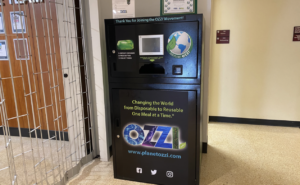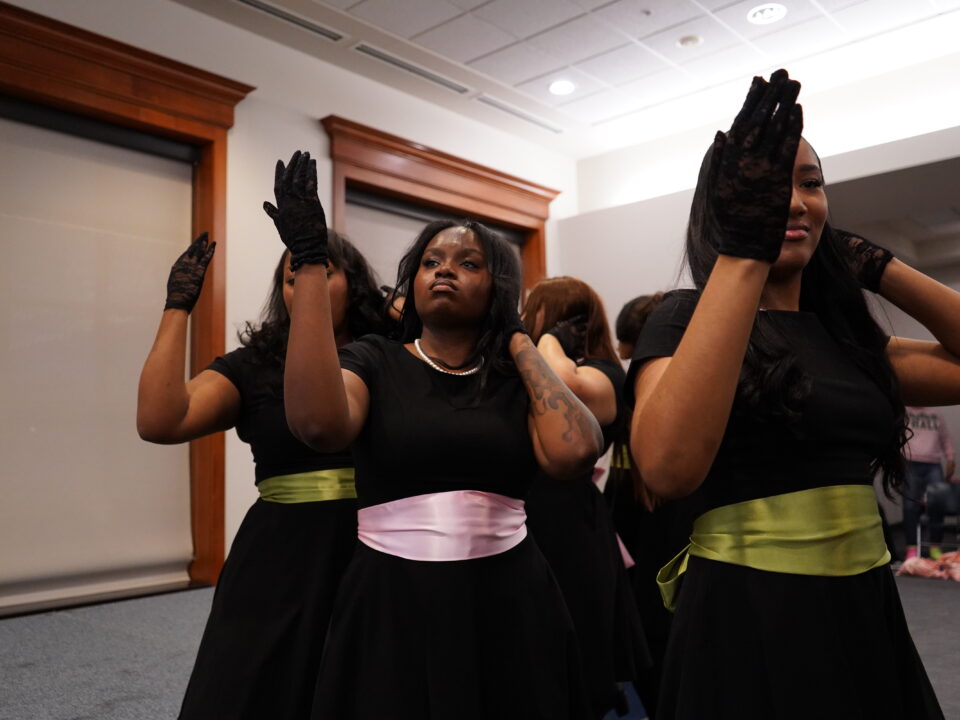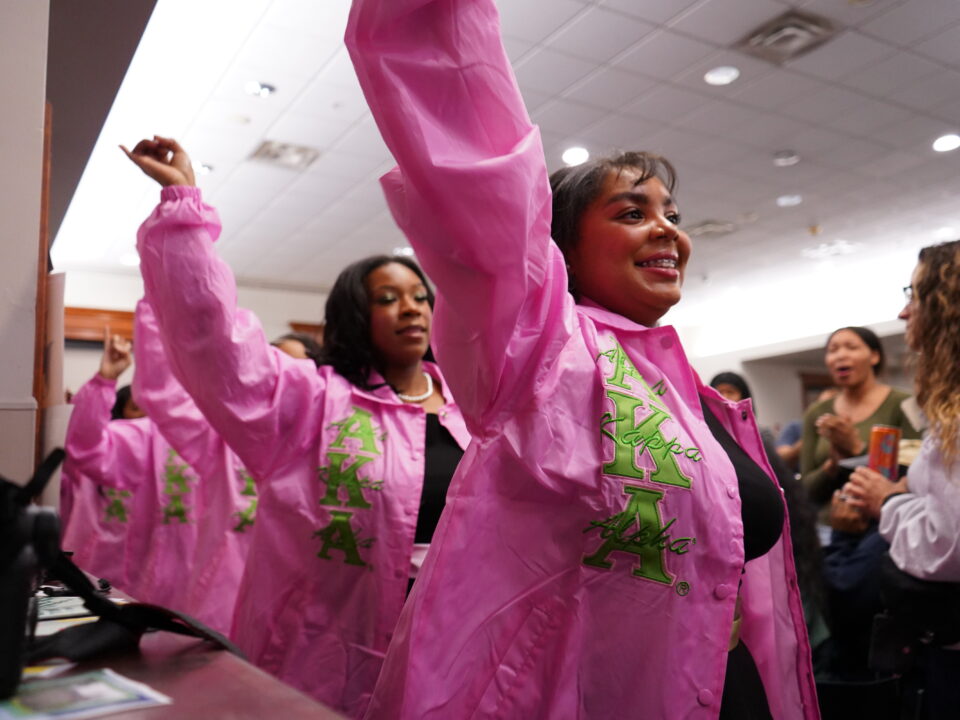Ditch the blue and white, EU goes green

In recent years, Elmhurst University staff and faculty members have taken steps to create a more sustainable campus.
For instance, Director of Dining Services, Bill Duro, said that a new to-go dining option called OZZI Containers is available for EU students this year.
This option entails four steps: students can purchase a reusable food box for $7.95, drop the box into the OZZI machine after use and retrieve a token for future use, take a new box the next time they want one, and drop the token in a jar at the register.
According to Duro, other sustainable initiatives in Dining Services include providing biodegradable plates, offering materials that are compostable and recyclable, using clean and recyclable oil, and having signs above waste baskets that clearly define which items should be recycled, composted, or thrown away.
Duro stated that although sustainable initiatives in Dining Services are ultimately made by Chartwells, the food service company used by EU, these initiatives are brought to campus as a result of ongoing communication between Chartwells, EU faculty members, and students.

Photo by- Ryan Windle
Duro believes these initiatives have the potential to make a big impact.
“I wish every single industry out there could do what we do,” Duro said.
Sustainable initiatives are not just happening in the cafeteria; according to Kelly Mikenas, the director of the environmental studies program, several other sustainable practices have been put into place.
She mentioned that last year, the boiler system was decentralized and the Alexander Lot was made with permeable paving. The decentralization of the boiler system helps to reduce energy, while the permeable paving helps to reduce storm water run-off, according to Mikenas.
Additionally, Mikenas was involved with putting a green roof on the Frick Center in the fall of 2019. She explained that the green roof helps trap storm water and insulate the building.
In addition to these changes, the Office of Information Services set an annual free printing limit to help reduce paper and ink waste and, “ensure adequate and continued free printing for all students,” according to Senior Director of Technology Support Services, James Fitzgerald.
“Many pages are left behind at printing stations and are discarded in recycling at the end of each day,” Fitzgerald said. “For this reason, limits on free printing are a common practice among colleges and universities.
He continued, “Funds previously spent on wasted supplies will be better leveraged to support student technology resources, including printer and copier maintenance and replacement when necessary.”
The annual free printing limit is currently set at 65 dollars, according to the Student Printing Procedures page found on the Elmhurst University portal.
According to an email from the Office of Information Services sent to the EU campus community on Sept. 6, this new printing limit went into effect on Sept. 12.
The limit is set at the 95 percentile of historical student printing, meaning 95 percent of students should not have to change their printing behavior.
Considering many of these sustainable initiatives at EU, Mikenas said that everyone has an individual responsibility to contribute to a more sustainable campus; however, she noted that individual actions are not enough.
“You personally can’t reduce the amount of energy that the university uses,” Mikenas stated. “You can reduce the amount that you use, but if you’re the only one doing it, it’s only gonna make a teeny tiny difference, but it really has to be something that everyone is doing.”



